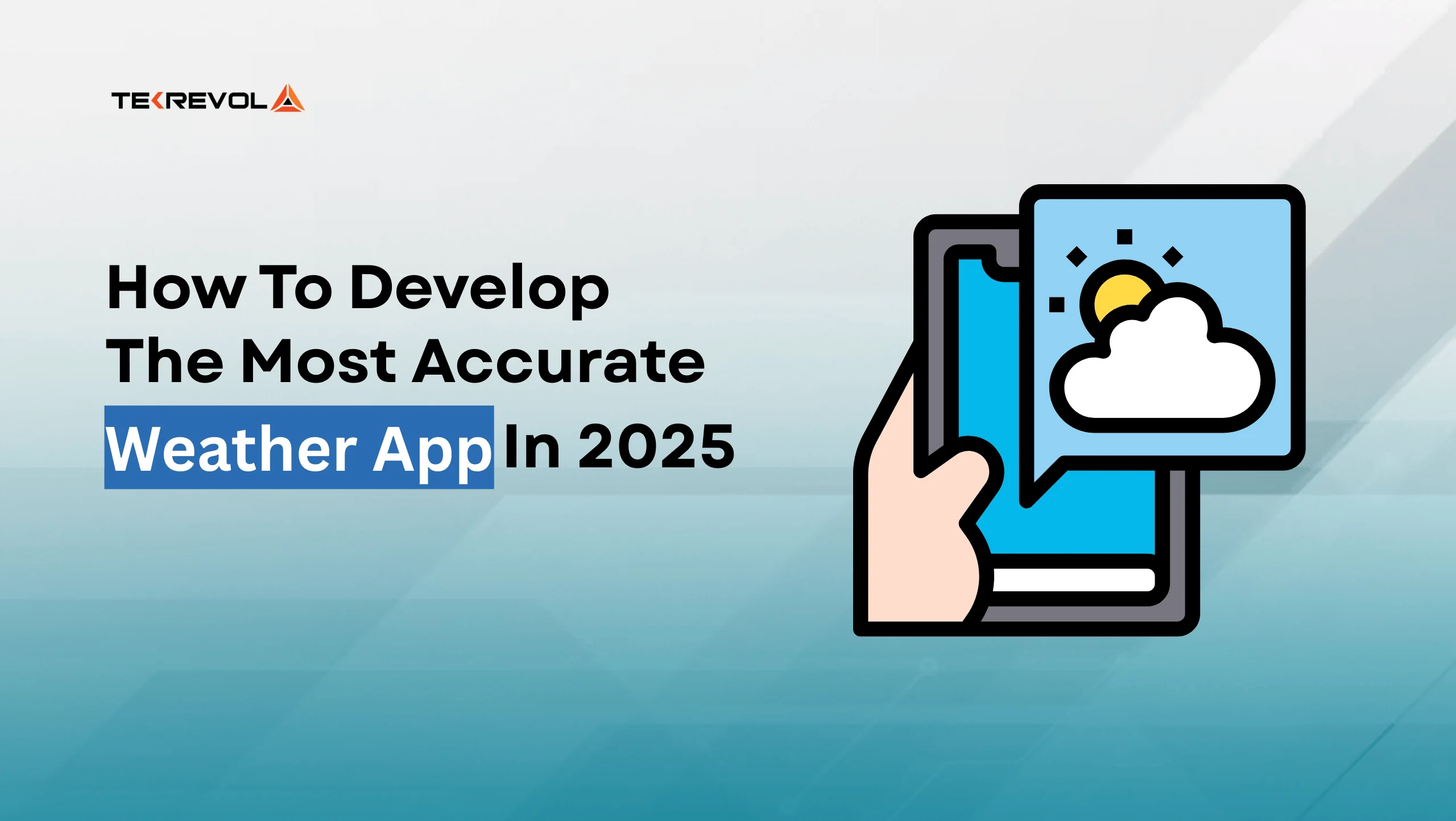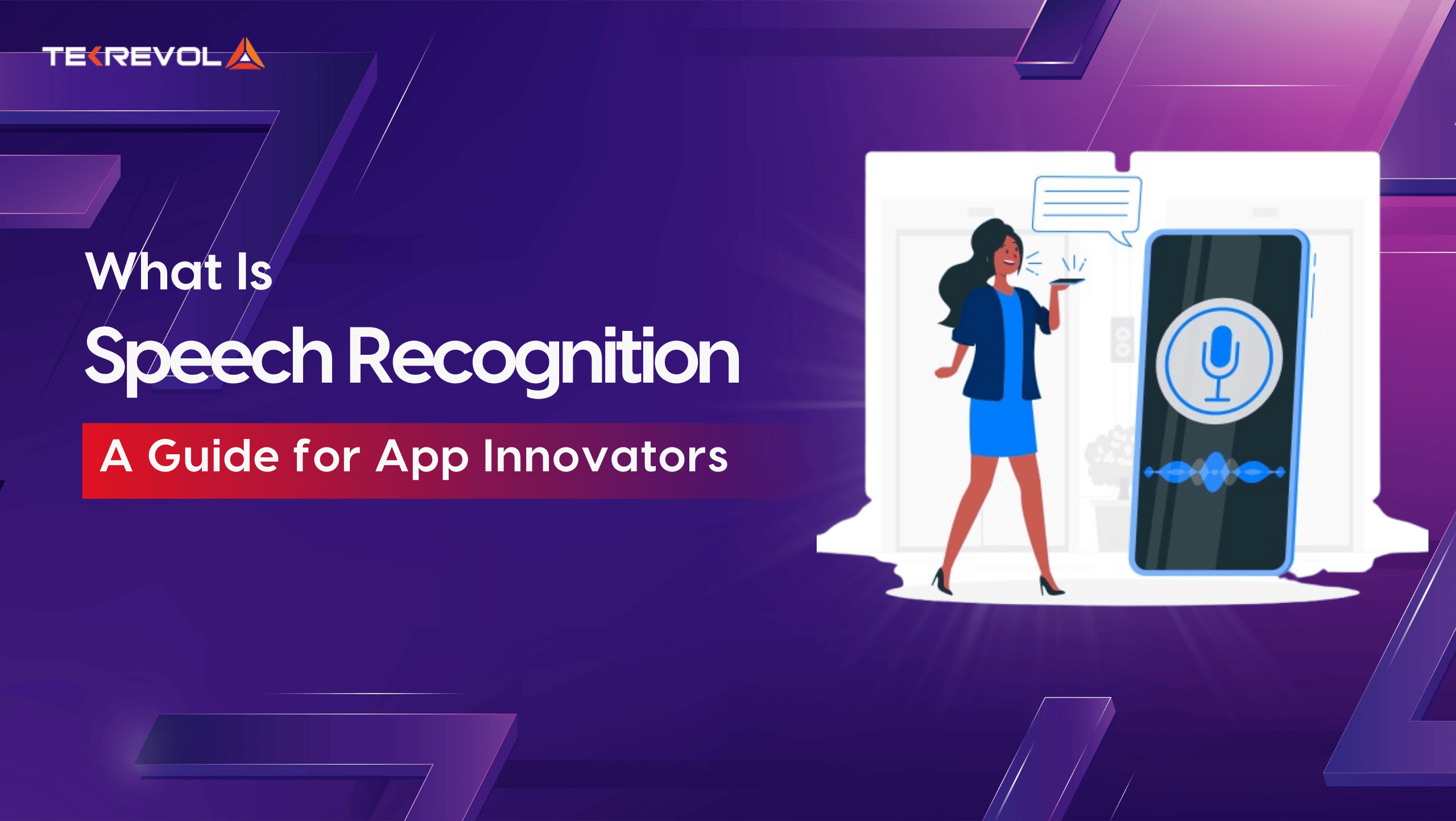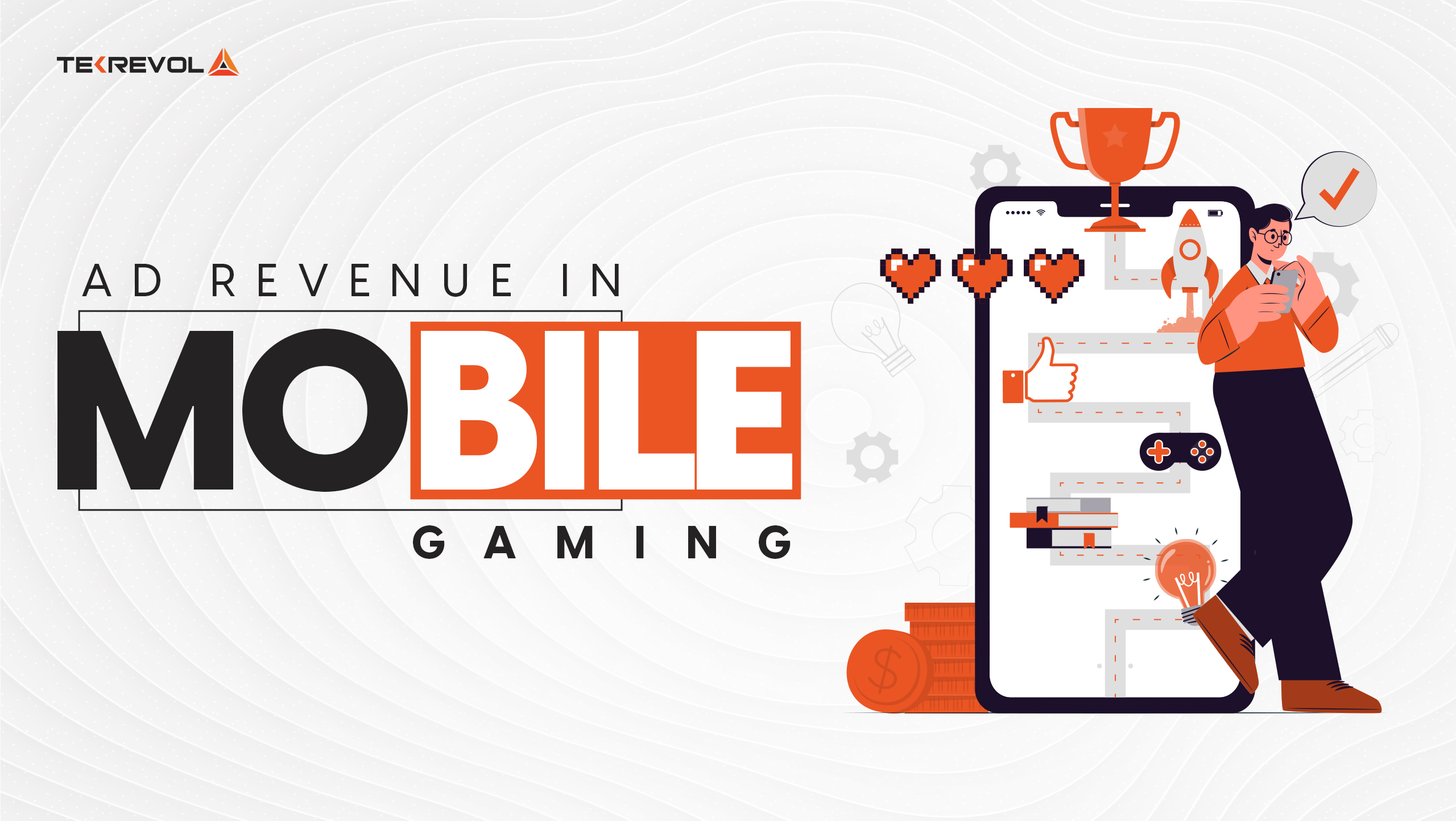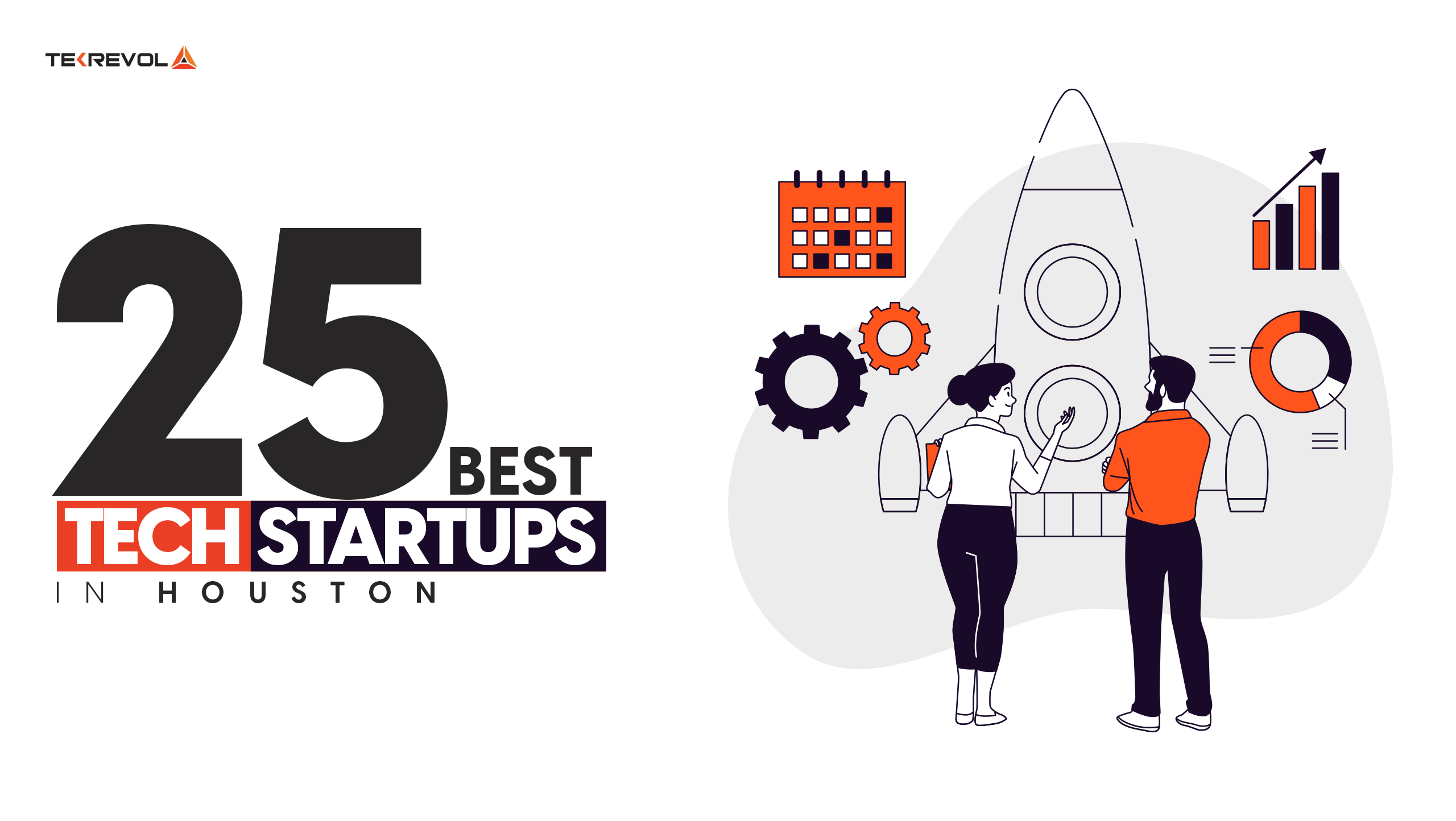Think this: you’re got your favorite sneakers on, coffee in hand, ready to head out—and zap, out of nowhere, a shower soaks you. Your weather app promised sunshine. Sound familiar? That’s why everyone is asking one question: what is the most accurate weather app?
Weather apps are not merely utilities anymore—they’re lifelines for tourists, event planners, hikers, and, yes, anyone who does not want to sport wet socks. In 2025, with the inclusion of artificial intelligence, hyperlocal weather forecasting, and advanced data modeling, competition to build the most accurate weather app has never been greater.
Here, we will talk about how to make the most dependable weather app of 2025, what it costs, the top technologies that power them, the top-grossing apps ruling the market currently, and how Tekrevol can help you create a weather app that users truly trust.
Overview of the Weather App Market
The market for weather apps is thriving. It had already reached a $1.5 billion valuation by 2024, and it will surpass $3 billion by the year 2030. It is fueled by growing climate uncertainty, outdoor lifestyles on the rise, and weather-sensitive data-dependent businesses.
So why do users continually search for what is the most accurate weather app? Because trust is important. If your app is incorrect too often, users abandon ship—fast. Accuracy is really the top driver for downloads and weather app retention, outperforming design or additional features, according to research after study.
With cutting-edge features like AI-driven forecasting, crowdsourced data, and AR-based visualizations, new competitors like Carrot Weather and Tomorrow.io are upending the market, which is dominated by established giants like Apple, The Weather Channel, and AccuWeather. This is a chance for companies and app developers to make their own impression.
What Technologies Power the Most Accurate Weather Apps?
To build an app that others have designated as “the most accurate” requires more than pulling temperature data. It’s the data universe and technology stack. Here’s what motivates them:
- APIs and Data Sources: NOAA, ECMWF, AccuWeather, Tomorrow.io, and local radar.
- AI and Machine Learning Models: Predictive models improve accuracy by learning from historical weather patterns.
- IoT & Sensors: Crowd-sourced weather stations and wearables offer hyperlocal context.
- Radar and Satellite Imagery: Used for tracking storms, cloud movements, and real-time reports.
- AR/VR Visualization: Some apps use AR to display future weather around you.
If users ask, is the Apple weather app accurate? The answer is yes, due to its adoption of Dark Sky’s tech and radar networks.
5 Simple Steps to Create a Weather App for iOS and Android
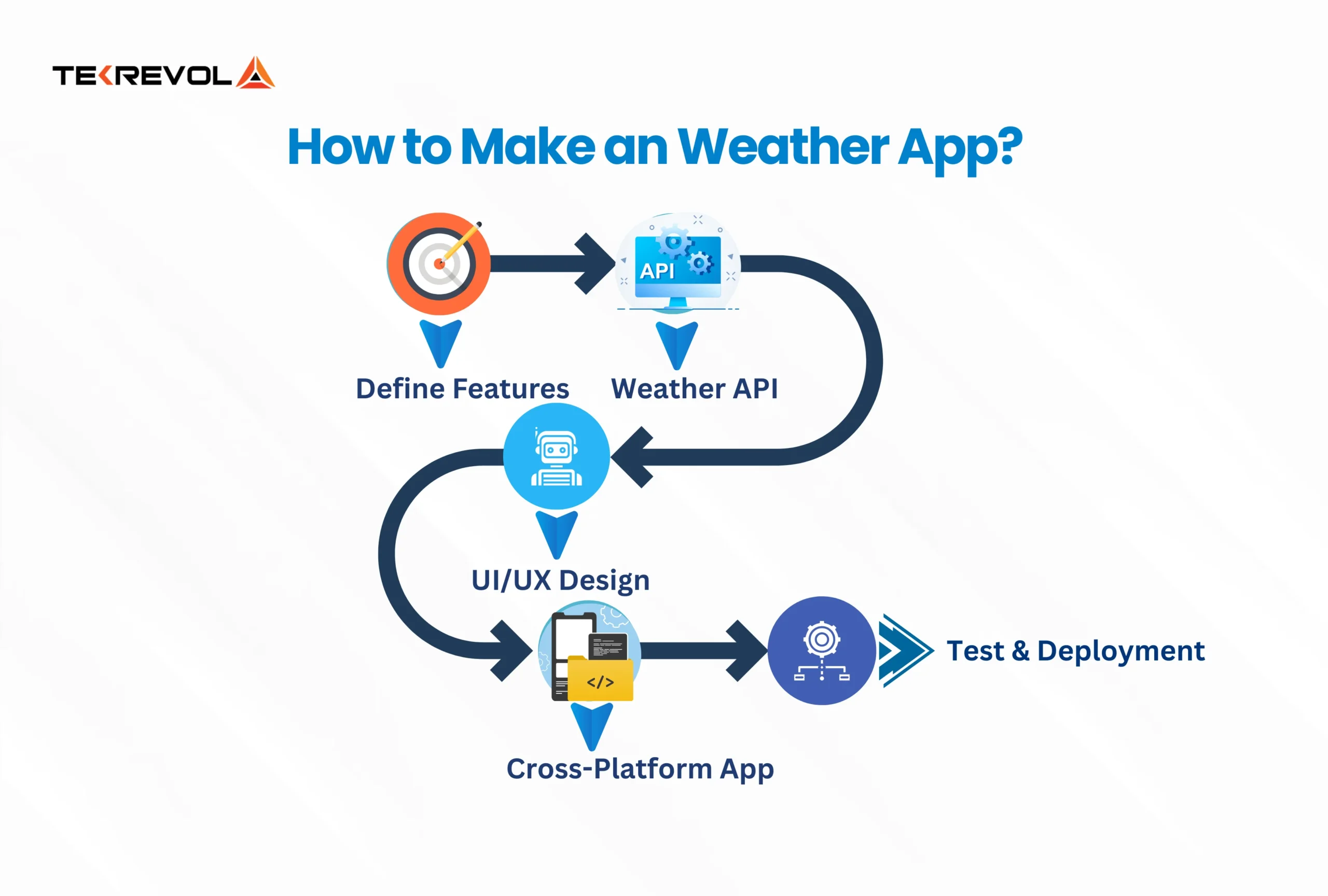
Step 1: Identify Core and Advanced Features
At least, your app should have:
- Hourly, daily, and weekly forecasts
- Real-time radar images
- Severe weather alerts
- Precipitation percentages (explaining what the percent signifies on the weather app)
Advanced features:
- AI-powered forecasts
- AR-enabled visualizations of weather
- Personalized notifications (e.g., “Rain in 15 minutes, grab your umbrella”)
- Wearable and IoT support
Step 2: Choose the Appropriate Weather APIs
Your application’s accuracy relies on the data sources. Leading APIs:
- OpenWeatherMap – worldwide coverage at a lower cost
- Tomorrow.io – AI-powered hyperlocal forecasts
- AccuWeather API – trusted by millions of users globally
- NOAA – utilized for U.S.-centered apps
Step 3: Design an Easy-to-Use User Interface
Good weather apps are simple, graphic, and quick. Feature:
- Simple designs
- Weather animations for instant recognition
- Interactive radar
- Widgets for lock screen access
Step 4: Build for Cross-Platform Success
Since users want to know what is the best weather app for iPhone and what is the best weather app for Android, your app must be both. Whether Flutter or React Native for the hybrid builds, or native with Swift (for iOS) and Kotlin (for Android).
Step 5: Test and Launch
Key testing phases:
- Performance testing to accommodate real-time data loads
- Accuracy testing to compare to trusted apps
- Cross-device compatibility to avoid “why is my weather app not working” complaints
- Beta testing with real users to refine usability
Turn Your Weather App Idea into Reality
From concept to launch, we craft apps that users trust every day.
Start Building with Tekrevol TodayKey Challenges in Building a Weather Application

Even with the best tools, challenges pop up:
- Data Overload: Weather data is massive; optimizing for speed without losing accuracy is hard.
- Battery Drain: Radar and location services can drain the device battery.
- Forecast Variability: Different APIs sometimes give slightly different data.
- User Trust: A single incorrect prediction can have users uninstall your app.
The problem is achieving a balance between technical excellence and ease and reliability.
How Much Does It Cost to Build a Weather Application?
Developing a weather app cost is hugely diverse. Here’s a closer examination:
1. Costs During Development Stage
- Basic App (Only Core Forecasts): $20,000 – $40,000
- Mid-Range App (Radar, Alerts, Widgets): $50,000 – $100,000
- Advanced App (AI, AR, IoT integration): $120,000 – $200,000+
2. Hidden Fees You Can’t Escape
- API Call Fees: Providers like Tomorrow.io or AccuWeather will bill by API call. In bulk, this can cost $500–$5,000+ per month.
- Server and Cloud Hosting: Live updates require cloud hosting that scales like AWS or Google Cloud.
- UI/UX Design: A Clean, modern design will cost you $5,000–$15,000 alone.
- Testing & QA: Budget 10–20% extra of development expenses for rigorous testing.
3. Post-Launch and Maintenance Fees
- App Store & Google Play Charges: Standard publishing fees.
- Bug Fixes & Updates: Continuous updates to avoid why is my weather app not working reviews.
- Marketing & User Acquisition: A top-shelf app nobody sees is worthless. Budget $10,000+ monthly for advertising.
- In brief: making the most accurate weather app isn’t all about coding—it’s about investing in long-term trust and scalability.
Launch a Weather App That Outshines the Competition
From cost planning to cloud integration—we’ve got you covered.
Get Your Free Project Estimate Today10 Best Weather Apps of 2025
When users question what is the most accurate weather app, these 10 are leading the way.
| Rank | App Name | Key Features | Platforms | Accuracy Rating |
| 1 | AccuWeather | Hyperlocal, MinuteCast | iOS, Android | ★★★★★ |
| 2 | The Weather Channel | Radar, Severe Alerts | iOS, Android | ★★★★★ |
| 3 | Apple Weather | Dark Sky integration | iOS | ★★★★☆ |
| 4 | Tomorrow.io | AI Forecasting | iOS, Android | ★★★★★ |
| 5 | Weather Underground | Crowd-Sourced Data | iOS, Android | ★★★★☆ |
| 6 | Carrot Weather | Fun UI, Customizable | iOS, Android | ★★★★☆ |
| 7 | RadarScope | Professional Radar | iOS, Android | ★★★★★ |
| 8 | WeatherBug | Lightning Alerts | iOS, Android | ★★★★☆ |
| 9 | 1Weather | Widgets, Simple UI | Android | ★★★★☆ |
| 10 | Yahoo Weather | Visual Appeal | iOS, Android | ★★★☆☆ |
1. AccuWeather
AccuWeather has long been the most accurate weather app, and that continues to be the case in 2025. Its MinuteCast feature offers minute-by-minute precipitation forecasts for your very specific street. The hyperlocal accuracy makes it a requirement for users who need real-time updates before going outdoors.
Beyond accuracy, AccuWeather also has an excellent design that’s professional and easy to use. With live radar, severe weather alerts, and a configurable widget, it’s still the standard to beat. As an added bonus for developers, it also features one of the most reliable APIs available that also helps you to build the most reliable augmented reality apps.
2. The Weather Channel
One of the most reputable applications in the world, The Weather Channel is an identity that is well recognized in households. You need it during tornado and hurricane season because of its severe weather warnings, resolution-enhanced radar maps, and storm tracking capabilities.
It’s based on sustainability, providing climate information and eco-tips, is what sets it apart in 2025. It also features smart TVs and wearables to keep users connected with forecasts beyond mobile devices.
3. Apple Weather
So, is Apple’s weather app accurate? With Dark Sky’s hyperlocal data built into it, yes—it’s a lot more reliable now. Apple Weather excels with its clean design and integration into iOS widgets, lock screens, and Siri.
Even though it’s only an iPhone-like chat app, its simplicity and accuracy make it popular. iOS users who want to know what is the best weather app for iPhone is are likely to suggest this one as the first choice.
4. Tomorrow.io
Tomorrow.io is not just a weather app—it’s a climate intelligence platform. With the ability of advanced AI, it predicts weather with an unprecedented level of accuracy, which is why it’s a favorite among businesses reliant on forecasts (aviation, logistics, outdoor events).
For the everyday consumer, it provides hyperlocal news, smart notifications, and personalized alerts. Its enterprise-grade reliability has assisted it in gaining momentum in 2025 as one of the world’s most accurate prediction apps. Moreover, you can also check out the 10 most expensive apps on Apple Store.
5. Weather Underground
Weather Underground takes advantage of crowd-sourced information from more than 250,000 personal weather stations globally. This renders it amongst the most hyperlocal applications on the market, particularly beneficial for neighbourhoods or tiny towns.
Its interface balances professional data with community insights. If you’ve ever asked what does the percentage of rain means weather app, Weather Underground goes the extra mile to explain forecasts clearly for non-technical users. Other than that you can also check music apps on Apple Store in the meantime.
6. Carrot Weather
Carrot Weather stands out for its personality—literally. It offers accurate forecasts along with a dash of sarcasm, which makes weather reporting really fun. It gets data from reliable sources like Dark Sky and AccuWeather, so don’t mistake its whimsical user interface for inaccuracy.
It is a great choice for Android and iOS because of its extensive widgets, AI-powered insights, and configurable layout. It combines reliability and enjoyment for children.
7. RadarScope
Meteorologists and storm chasers love the pro-level software RadarScope. In addition to tools for tracking tornadoes, hurricanes, and severe storms in real time, it provides high-resolution radar imagery.
It may be a little daunting to a layperson, but nothing compares to it in terms of data precision and depth. For serious storm tracking enthusiasts, it’s easily one of the top weather apps of 2025.
8. WeatherBug
WeatherBug has built a following with its real-time lightning alerts and interactive radar charts. Its safety features and user-driven updates make it a valuable utility, particularly for outdoor workers and athletes.
WeatherBug also concentrates on environmental data in 2025, giving users air quality and pollen forecasts alongside regular forecasts. It makes it so much more than a weather application—it’s a health companion.
9. 1Weather
The only Android exclusivity, 1Weather is cherished by enthusiasts because of its minimalist UI, beautiful widgets, and spot-on forecasts. It balances functionality over looks to perfection, not overwhelming users with every feature they don’t require.
Android users seeking the best weather app for Android tend to place 1Weather at the beginning of the list because it is light, accurate, and customizable.
10. Yahoo Weather
Yahoo Weather is renowned for its stunning visuals, pairing weather forecasts with actual photos of your location. While less precise than Tomorrow.io or AccuWeather, it excels on design and simplicity just like Jasper AI apps.
It’s great for casual users who prefer simplicity over pro-grade accuracy. While not the best for critical forecasts, it remains popular everywhere else on the planet.
Weather App Development Trends for 2025 and Beyond
The following trends will influence the development of the upcoming generation of weather apps:
- Long-Term Forecasts Using AI: Forecasts beyond 10 days that are more intelligent and accurate.
- Sustainability Advice: With weather updates, weather applications offer eco-advice.
- Immersion Experiences: Weather representations improved by AR and VR.
- Integration with Smart Homes: Your thermostat will automatically change according to the prediction for tomorrow.
How Tekrevol Helps You Develop the Most Accurate Weather App
We at Tekrevol create experiences that people depend on on a daily basis, not simply applications. Our team combines state-of-the-art technology, precise APIs, and user-centered design to create solutions that shine, whether you want to create a lean Android app or an enterprise-grade AI-powered platform.
We help you to:
- Incorporating hyperlocal weather APIs and AI prediction models
- Building clean, intuitive interfaces appropriate for your users
- Building cross-platform apps for iOS, Android, and cloud platforms
- Scale your product with cloud hosting, updates, and ongoing support
In a world where people constantly ask, what is the most accurate weather app, we’ll help ensure the answer could be: yours.
Build the Next Big Weather App in 2025 with Tekrevol
Leverage cutting-edge technologies and flawless UX for maximum impact.
Kickstart Your Project Today
